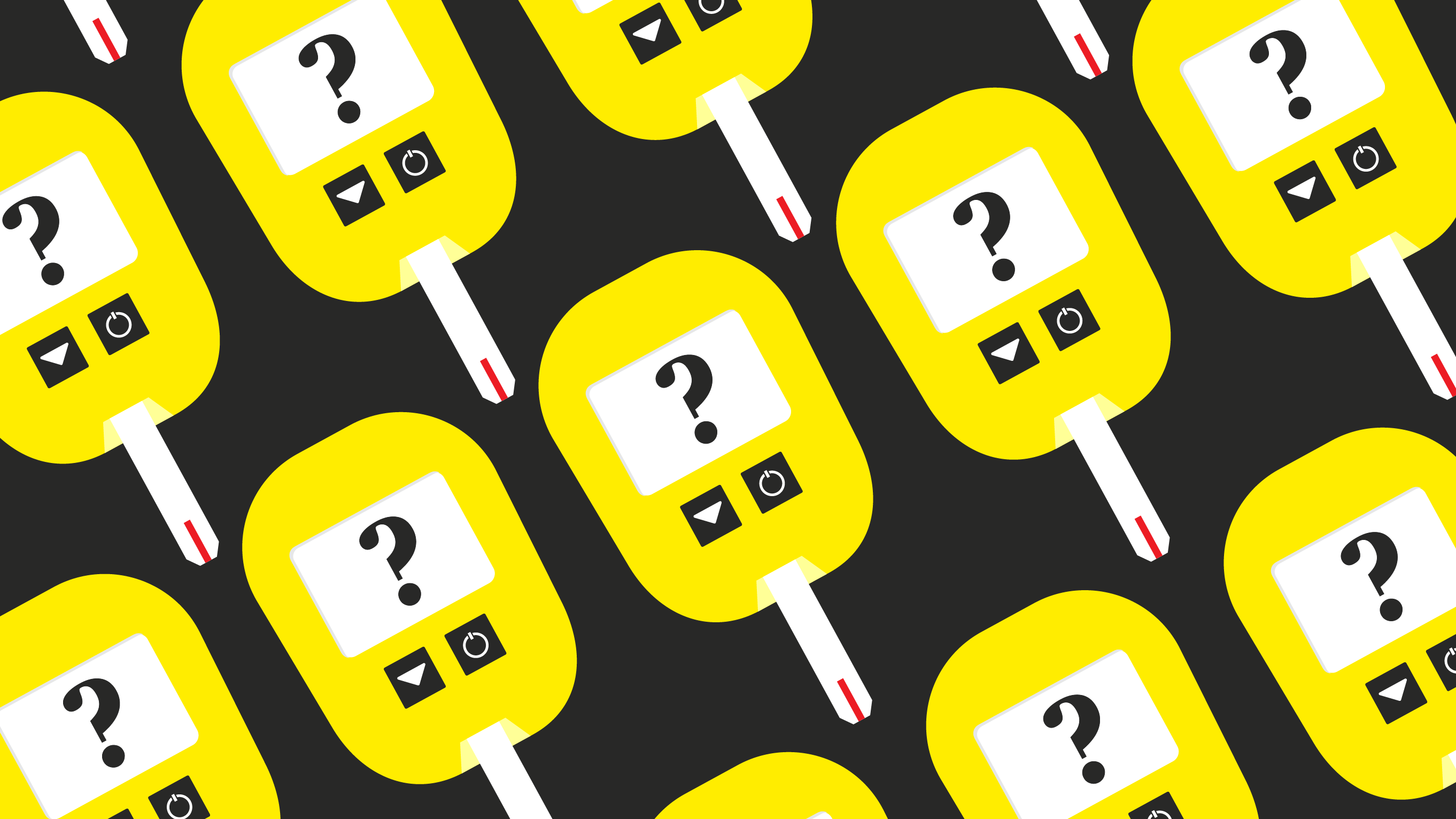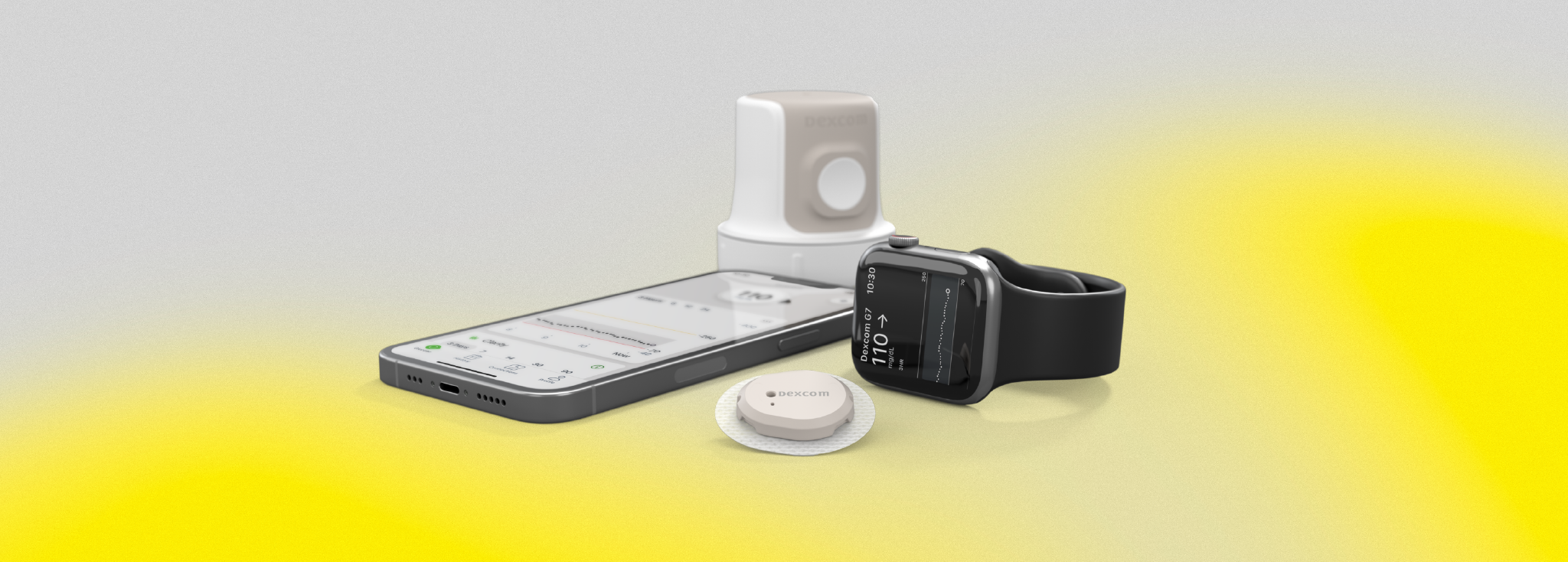CGM Troubleshooting: Quick Fixes for Diabetes Devices
Written by: Liz Cambron-Kopco
2 minute read
March 22, 2022
Continuous glucose monitors (CGMs) are wearable devices that make managing diabetes easier. Popular brands include Abbott’s FreeStyle Libre 3, Dexcom’s G7, Medtronic’s Guardian Connect and Senseonics’ Eversense system. After getting your CGM, troubleshooting may be needed as you adjust and ensure everything works smoothly. Here are some common errors that happen when you wear a CGM and some CGM troubleshooting tips.
Trouble applying the sensor
Every CGM comes with instructions for applying the sensor, but applicators can sometimes malfunction. Maybe the spring popped before you were ready, or the applicator didn’t release the sensor. If this happens:
- Don’t try to reapply or reuse the sensor.
- Save the sensor and its packaging. Manufacturers may need the serial number.
- Contact the manufacturer for a free replacement. Be prepared to return the faulty sensor if requested.
- Here is the customer contact info for the CGMs available:
Sensor falling off
When you’re new to CGMs, they might feel awkward at first, and accidents happen. Whether it’s during a workout, changing clothes, or just after applying, sensors can get knocked off. To help prevent this:
- Clean the area with an alcohol wipe before applying the sensor.
- Avoid lotions beforehand.
- Use a liquid adhesive for extra stickiness.
- Try different application sites that are less likely to get bumped, but check with your doctor first.
- Avoid exercise or showers right after applying.
- Consider wearing a patch over your sensor to keep it secure. Some brands, like Dexcom, even offer free patches.
Losing signal with your phone
Many CGMs let you monitor your glucose through a mobile app instead of a separate device.
Sometimes, though, you might lose the connection between your phone and the sensor. To fix this:
- Make sure your phone is close enough to receive signals.
- Check for water around the sensor; it could disrupt signals.
- Toggle your phone’s Bluetooth off and back on.
- Avoid applying pressure to the sensor, especially while sleeping.
- Keep your phone charged; low battery mode can disable Bluetooth.
Skin reactions to CGM adhesive
CGMs stick to your skin using adhesives, and some people can have bad reactions to them. If you experience irritation or rashes:
- Rotate where you apply the CGM to avoid overusing the same spot.
- Talk to your doctor about patch testing to identify problematic adhesives.
- Use an adhesive remover when taking off the sensor to protect your skin.
- Apply a liquid adhesive barrier or patch under the sensor to prevent direct contact.
The bottom line
Using a CGM may take some getting used to, but once you’ve mastered the basics, it can make managing diabetes so much easier.
With a little patience and the tips above, you’ll be well on your way to making the most out of your device.
CGMs aren’t just about convenience—they’re powerful tools that can improve your health and quality of life. Keep going—you’ve got this!
This content was made possible by Abbott, a Founding Partner of Beyond Type 1. Beyond Type 1 maintains editorial control over its content.

Author
Liz Cambron-Kopco
Liz has been living with type 2 diabetes since 2014, but grew up surrounded by it as a first-generation Mexican-American. With a bug for research, Liz pursued a PhD in molecular biology and spent her early career studying insulin signalling in invertebrates to understand how insects' tiny little bodies work. Along with advocating for women and girls in STEM, Liz shares her personal journey with diabetes on her social media platforms to help teach people to become their own advocates. Her passion for advocacy led her to join the Beyond Type 1 team. When she's not advocating, Liz enjoys hiking with her husband and their terrier/schnauzer mixed pup Burberry.
Related Resources

Hyperglycemia—or high blood sugar—can sneak up on you, whether it’s from a missed dose, a...
Read more

Curious about how to join a diabetes clinical trial? If so, good on ya’, because...
Read more

Diabetes clinical trials pave the way for how we manage and treat type 1 and...
Read more

